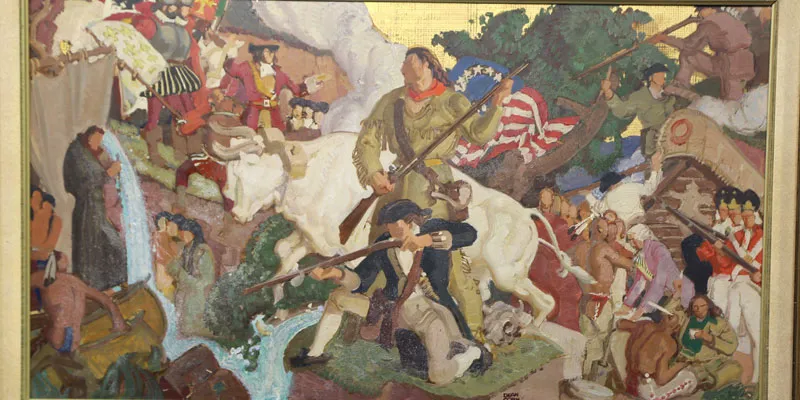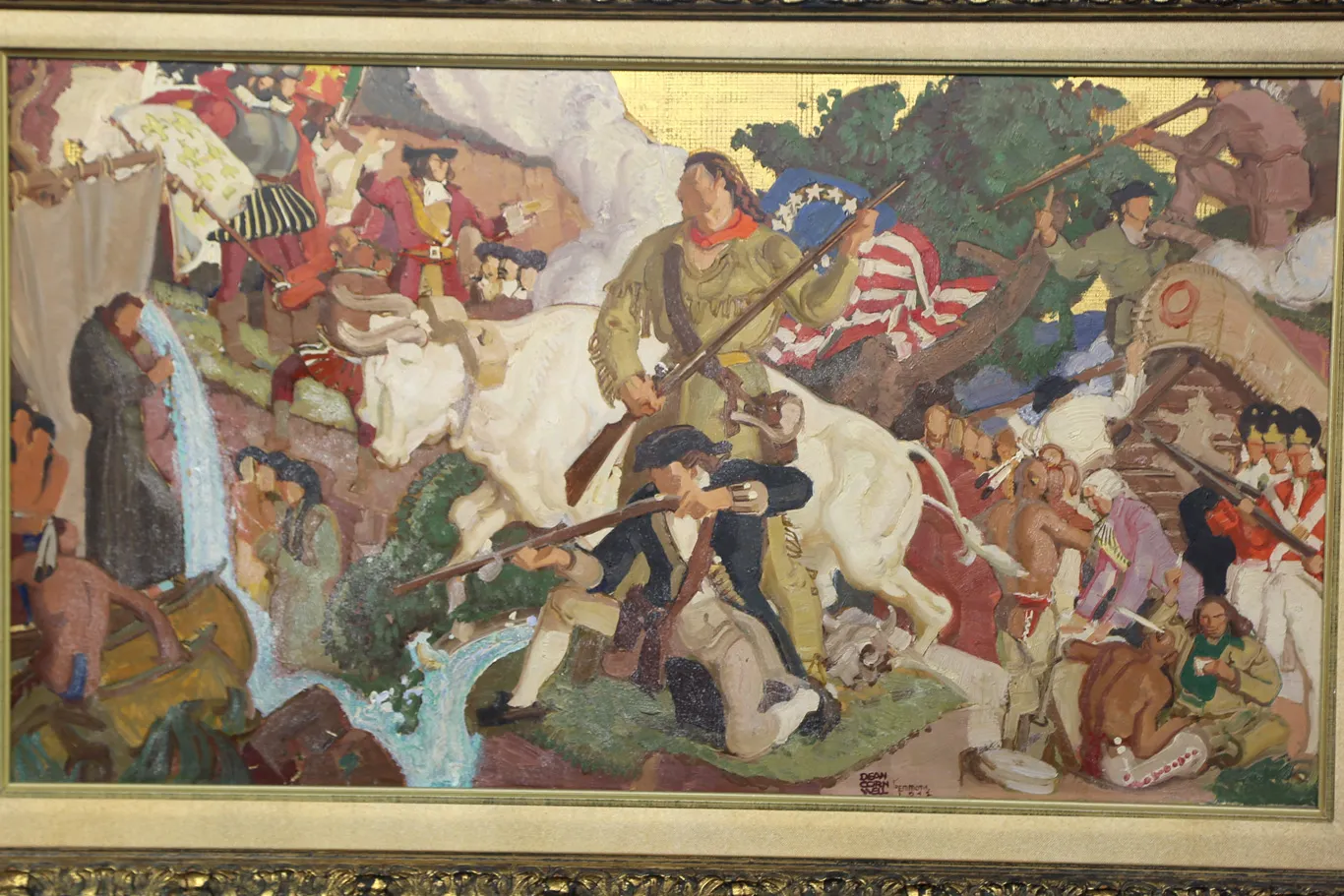A Closer Look at Dean Cornwell's Tennessee Murals
In the early 1940s, American artist Dean Cornwell painted two murals that depict two of Tennessee's most celebrated figures, John Sevier and Andrew Jackson.

Original Dean Cornwell oil sketch that was used as a proposal for the murals intended to hang in the Tennessee State Office Building in Nashville. Meredith Hilferty appraised this item in 2018 during ROADSHOW's visit to Churhcill Downs Racetrack in Louisville, Kentucky.
May 6, 2019
During ANTIQUES ROADSHOW’s May 2018 visit to Churchill Downs Racetrack in Louisville, Kentucky, a guest named Skip brought in an oil sketch by American artist Dean Cornwell. The sketch was a rough draft of an idea that would become two murals that Cornwell was intending to paint for the Tennessee State Office Building in Nashville. Skip told Paintings & Drawings appraiser Meredith Hilferty that he inherited the sketch from his grandmother in 1984, and that this was not the first assignment that his grandfather, the lead architect on the project, had hired Cornwell for. In 1937, Cornwell painted an Art Deco style mural that currently hangs in the Davidson County Courthouse in Nashville. The mural depicts “allegorical figures in heroic poses to represent themes of Agriculture, Industry, Commerce, and Statesmanship.” A few years later Cornwell would transfer these themes to the murals he painted for display in the John Sevier State Office Building in Nashville.
Both murals feature two of Tennessee’s most notable figures, John Sevier and Andrew Jackson. The mural showing Sevier is titled The Discovery of Tennessee, while the mural showing Jackson is named The Development of Tennessee; both were painted with the intention to portray allegories of Tennessee’s history.
After serving in the Revolutionary War, John Sevier was involved in a Legislative Council that pushed to ratify Tennessee as 16th state in the Union, after it was divided from North Carolina into the Southwest Territory. On March 30, 1796, Sevier became the first governor of Tennessee, serving a second term from September 23, 1803 – September 20, 1809.
As the mural titles suggest, Sevier took part in the creation of Tennessee, yet, it was Jackson who oversaw the development of the state. Prior to his presidency, Jackson served in a number of positions representing Tennessee in the federal government including attorney general (1971), Congressman (1796 – 1797), and Tennessee’s first Senator, which he served from September 26, 1797 – April 1, 1798, then again from March 4, 1823 – October 14, 1825.
The sketch that was brought to Churchill Downs reflects the type of imagery that would be used to represent the achievements of these two men in Tennessee’s history. Hilferty explains the significance of the sketch that Skip brought in as a key element of Cornwell’s process:
”What I find really interesting about this is that it is a preliminary oil painting for the two much larger murals that he ended up realizing. It combines elements from both of those, which is really kind of neat to see, how he may have used this painting to pitch the idea to your grandfather, or whoever else was making the decisions, and just say, 'This is kind of what I'm thinking. This is the way I want to go with this.' And out of that were born these two murals that still exist today.”
Hilferty estimated that the sketch, which is signed by Cornwell and dedicated to Skip’s grandfather, would sell at auction today for $25,000 to $45,000 and should be insured for no less than $90,000.
See the murals below.
THE DEVELOPMENT OF TENNESSEE — This mural depicts Andrew Jackson (center), dressed to commemorate his service as a major general during the War of 1812, surrounded by scenes and and significant figures from Tennessee's history. Dean Cornnwell, the murals' artist, poses with his newly unveiled work at the John Sevier State Office Building in Nashville in January 1941. (Image credit: Courtesy of the Tennessee State Library and Archives, Department of Conservation Photograph Collection).
Related
To learn more about Dean Cornwell, Andrew Jackson, and John Sevier, visit:
The Posterity Project
A behind-the-scenes look at Cornwell’s murals.Dean Cornwell 1892 - 1960
A brief history of Cornwell’s life, from the National Museum of American Illustration.John Sevier
A brief history of Sevier’s life from the Tennessee Encyclopedia.






